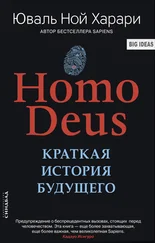This ‘gorging gene’ theory is widely accepted. Other theories are far more contentious. For example, some evolutionary psychologists argue that ancient foraging bands were not composed of nuclear families centred on monogamous couples. Rather, foragers lived in communes devoid of private property, monogamous relationships and even fatherhood. In such a band, a woman could have sex and form intimate bonds with several men (and women) simultaneously, and all of the band’s adults cooperated in parenting its children. Since no man knew definitively which of the children were his, men showed equal concern for all youngsters.
Such a social structure is not an Aquarian utopia. It’s well documented among animals, notably our closest relatives, the chimpanzees and bonobos. There are even a number of present-day human cultures in which collective fatherhood is practised, as for example among the Barí Indians. According to the beliefs of such societies, a child is not born from the sperm of a single man, but from the accumulation of sperm in a woman’s womb. A good mother will make a point of having sex with several different men, especially when she is pregnant, so that her child will enjoy the qualities (and paternal care) not merely of the best hunter, but also of the best storyteller, the strongest warrior and the most considerate lover. If this sounds silly, bear in mind that before the development of modern embryological studies, people had no solid evidence that babies are always sired by a single father rather than by many.
The proponents of this ‘ancient commune’ theory argue that the frequent infidelities that characterise modern marriages, and the high rates of divorce, not to mention the cornucopia of psychological complexes from which both children and adults suffer, all result from forcing humans to live in nuclear families and monogamous relationships that are incompatible with our biological software. 1
Many scholars vehemently reject this theory, insisting that both monogamy and the forming of nuclear families are core human behaviours. Though ancient hunter-gatherer societies tended to be more communal and egalitarian than modern societies, these researchers argue, they were nevertheless comprised of separate cells, each containing a jealous couple and the children they held in common. This is why today monogamous relationships and nuclear families are the norm in the vast majority of cultures, why men and women tend to be very possessive of their partners and children, and why even in modern states such as North Korea and Syria political authority passes from father to son.
In order to resolve this controversy and understand our sexuality, society and politics, we need to learn something about the living conditions of our ancestors, to examine how Sapiens lived between the Cognitive Revolution of 70,000 years ago, and the start of the Agricultural Revolution about 12,000 years ago.
Unfortunately, there are few certainties regarding the lives of our forager ancestors. The debate between the ‘ancient commune’ and ‘eternal monogamy schools is based on flimsy evidence. We obviously have no written records from the age of foragers, and the archaeological evidence consists mainly of fossilised bones and stone tools. Artefacts made of more perishable materials – such as wood, bamboo or leather – survive only under unique conditions. The common impression that pre-agricultural humans lived in an age of stone is a misconception based on this archaeological bias. The Stone Age should more accurately be called the Wood Age, because most of the tools used by ancient hunter-gatherers were made of wood.
Any reconstruction of the lives of ancient hunter-gatherers from the surviving artefacts is extremely problematic. One of the most glaring differences between the ancient foragers and their agricultural and industrial descendants is that foragers had very few artefacts to begin with, and these played a comparatively modest role in their lives. Over the course of his or her life, a typical member of a modern affluent society will own several million artefacts – from cars and houses to disposable nappies and milk cartons. There’s hardly an activity, a belief, or even an emotion that is not mediated by objects of our own devising. Our eating habits are mediated by a mind-boggling collection of such items, from spoons and glasses to genetic engineering labs and gigantic ocean-going ships. In play, we use a plethora of toys, from plastic cards to 100,000-seater stadiums. Our romantic and sexual relations are accoutred by rings, beds, nice clothes, sexy underwear, condoms, fashionable restaurants, cheap motels, airport lounges, wedding halls and catering companies. Religions bring the sacred into our lives with Gothic churches, Muslim mosques, Hindu ashrams, Torah scrolls, Tibetan prayer wheels, priestly cassocks, candles, incense, Christmas trees, matzah balls, tombstones and icons.
We hardly notice how ubiquitous our stuff is until we have to move it to a new house. Foragers moved house every month, every week, and sometimes even every day, toting whatever they had on their backs. There were no moving companies, wagons, or even pack animals to share the burden. They consequently had to make do with only the most essential possessions. It’s reasonable to presume, then, that the greater part of their mental, religious and emotional lives was conducted without the help of artefacts. An archaeologist working 100,000 years from now could piece together a reasonable picture of Muslim belief and practice from the myriad objects he unearthed in a ruined mosque. But we are largely at a loss in trying to comprehend the beliefs and rituals of ancient hunter-gatherers. It’s much the same dilemma that a future historian would face if he had to depict the social world of twenty-first-century teenagers solely on the basis of their surviving snail mail – since no records will remain of their phone conversations, emails, blogs and text messages.
A reliance on artefacts will thus bias an account of ancient hunter-gatherer life. One way to remedy this is to look at modern forager societies. These can be studied directly, by anthropological observation. But there are good reasons to be very careful in extrapolating from modern forager societies to ancient ones.
Firstly, all forager societies that have survived into the modern era have been influenced by neighbouring agricultural and industrial societies. Consequently, it’s risky to assume that what is true of them was also true tens of thousands of years ago.
Secondly, modern forager societies have survived mainly in areas with difficult climatic conditions and inhospitable terrain, ill-suited for agriculture. Societies that have adapted to the extreme conditions of places such as the Kalahari Desert in southern Africa may well provide a very misleading model for understanding ancient societies in fertile areas such as the Yangtze River Valley. In particular, population density in an area like the Kalahari Desert is far lower than it was around the ancient Yangtze, and this has far-reaching implications for key questions about the size and structure of human bands and the relations between them.
Thirdly, the most notable characteristic of hunter-gatherer societies is how different they are one from the other. They differ not only from one part of the world to another but even in the same region. One good example is the huge variety the first European settlers found among the Aborigine peoples of Australia. Just before the British conquest, between 300,000 and 700,000 hunter-gatherers lived on the continent in 200–600 tribes, each of which was further divided into several bands. 2Each tribe had its own language, religion, norms and customs. Living around what is now Adelaide in southern Australia were several patrilineal clans that reckoned descent from the father’s side. These clans bonded together into tribes on a strictly territorial basis. In contrast, some tribes in northern Australia gave more importance to a person’s maternal ancestry, and a person’s tribal identity depended on his or her totem rather than his territory.
Читать дальше
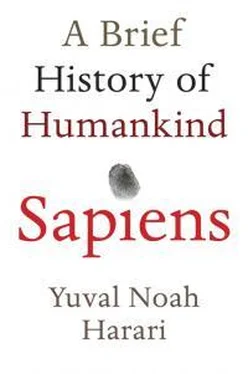
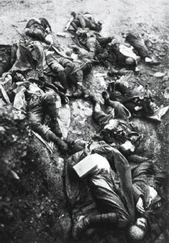
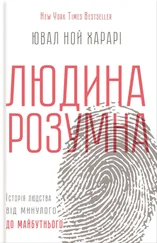
![Юваль Ной Харари - Sapiens. Краткая история человечества [litres]](/books/34310/yuval-noj-harari-sapiens-kratkaya-istoriya-cheloveche-thumb.webp)
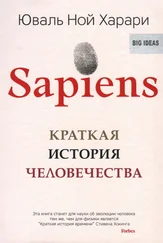

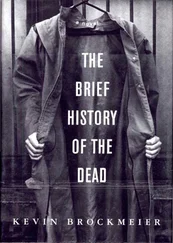

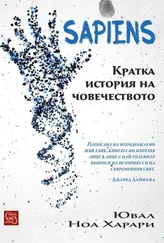
![Юваль Ной Харари - 21 урок для XXI века [Версия с комментированными отличиями перевода]](/books/412481/yuval-noj-harari-21-urok-dlya-xxi-veka-versiya-s-ko-thumb.webp)
